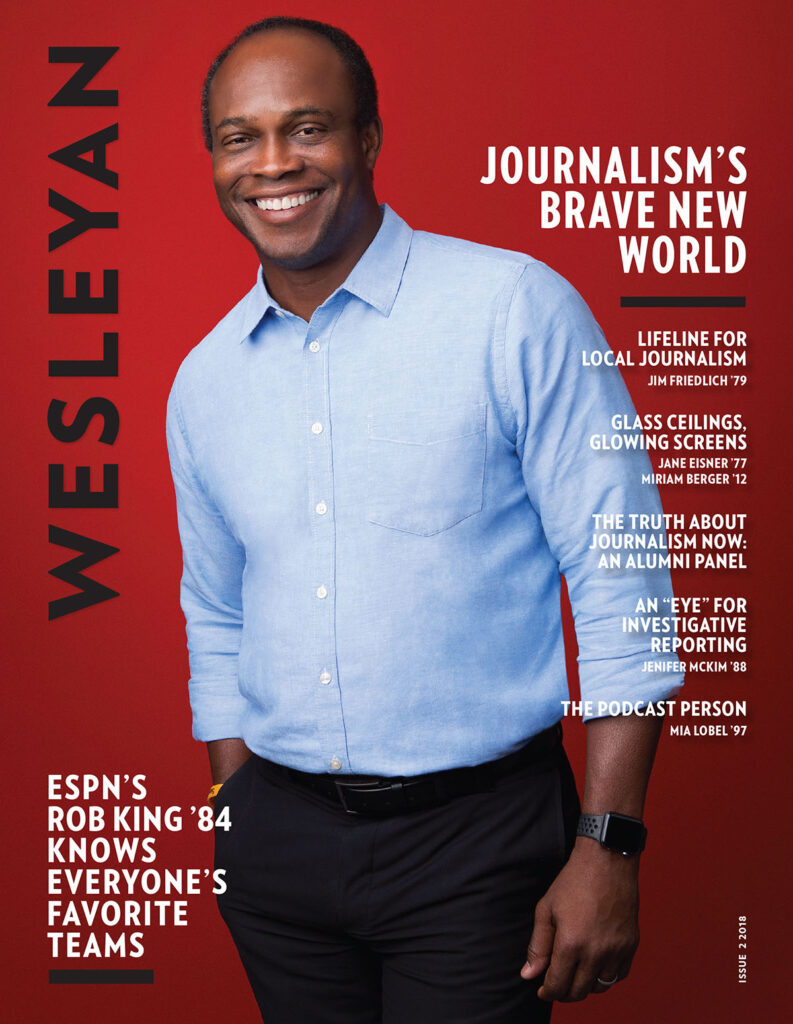 No matter how many likes you get on Instagram, your parents will never lay them out on the coffee table. But one mention in a print magazine and they’ve got long-lasting bragging rights.
No matter how many likes you get on Instagram, your parents will never lay them out on the coffee table. But one mention in a print magazine and they’ve got long-lasting bragging rights.
This is the realization that Aaron Lammer, founder of the Longform podcasts, came to after his name and brand were mentioned in the Wesleyan alumni magazine.
“I bought myself five years of my parents not thinking I was a failure because the Wesleyan alumni magazine mentioned Longform once.”
“You can probably imagine that his podcast’s appearance in the magazine was noted by fellow classmates,” writes Erin Peterson of Capstone Communications. “You might imagine his parents keeping a copy of that magazine on their coffee table, which they might point to when their friends were over.”
Peterson emailed Lammer after hearing his comments on a podcast about an entirely different topic and was struck by the immediate cachet of getting your name in print.
“In today’s world, print feels fundamentally more valuable than online,” she continues. “It is a thing people can hold in their hands, a thing that says: ‘We invested real money to bring this story to you. It’s worth the paper, the staples, the printing, and the mailing.’”
This is why it brings that instant credibility, that certain something that says “this is important.” We value the physical over the digital, whether it’s a magazine, a CD or album, or a video. There’s a velvet rope appeal to print, which stems from our innate understanding that not just anyone can create in print. It takes a certain amount of investment beyond the fast post, and that makes it more important.
It’s undoubtedly the reason why content marketers prefer printed magazines over digital when it comes to brand marketing and thought leadership. And for Peterson, it makes her a little nuts when the universities she works with decide to cut back on their printed alumni publications.
“It’s why I get so furious when magazine editors talk cavalierly about ditching their print magazine’s class notes sections or putting them behind a password-protected wall on a website,” she writes. “I get frustrated when schools decide to cut pages or cut issues because of the cost savings, without realizing the value they’re destroying in the process.”
Print magazines have staying power, and that’s worth an enormous amount in the long run of marketing and building stronger relationships with your readers.
“How many people keep a magazine around their house for months because they’re in it? How many people tear out that tiny callout you wrote about the alumni author in the class notes? How many people tuck a story about themselves from your publication into a folder that they keep for their whole lives?
“It’s not just those starting-out stories that matter,” Peterson continues. “A few years ago, I wrote a story about a billionaire (yep, a billionaire with a ‘b’) who owns dozens and dozens of television and radio stations across the country. This guy knows media inside and out! He controls it! And when that story about him appeared in the alumni magazine, his administrative assistant emailed me about three seconds after it was published to ask if her boss could get 10 copies, pronto. (I passed the note along to the editor and suggested she charge $1 million per issue, but I think she mailed them out for free. Nobody takes my good advice.)
“I don’t want to take too much credit for the fact that he later went on to give millions of dollars to the school WHICH IS NOW NAMED AFTER HIM, but you can probably imagine that the story didn’t hurt,” she notes.
Listen, I’m not saying you’ll get million-dollar donations every time you publish your magazine. What you will get is engaged readers, readers who care about your organization and would love to be featured in a piece of their own. You’ll get attention, the long-lasting kind that doesn’t get buried in the news feed but lives on the coffee table.
Print is not easy, nor is it cheap …. and it’s absolutely worth every penny.
